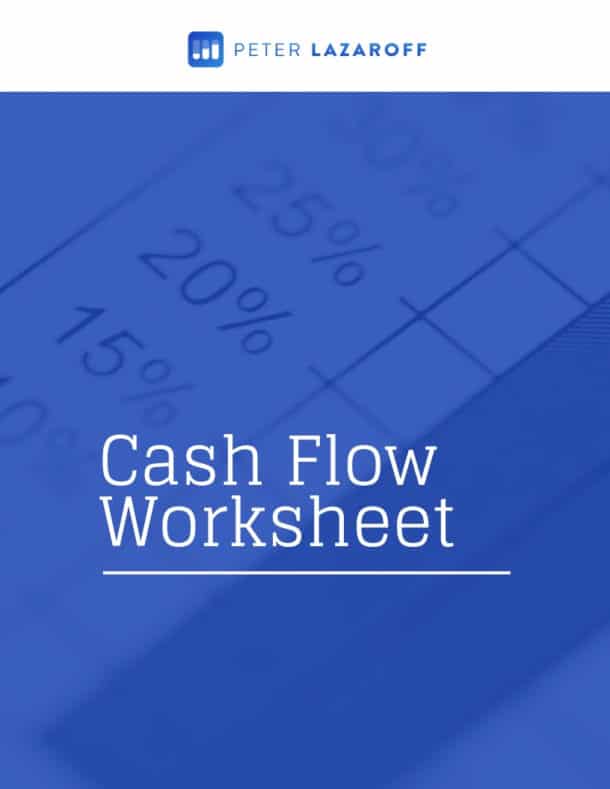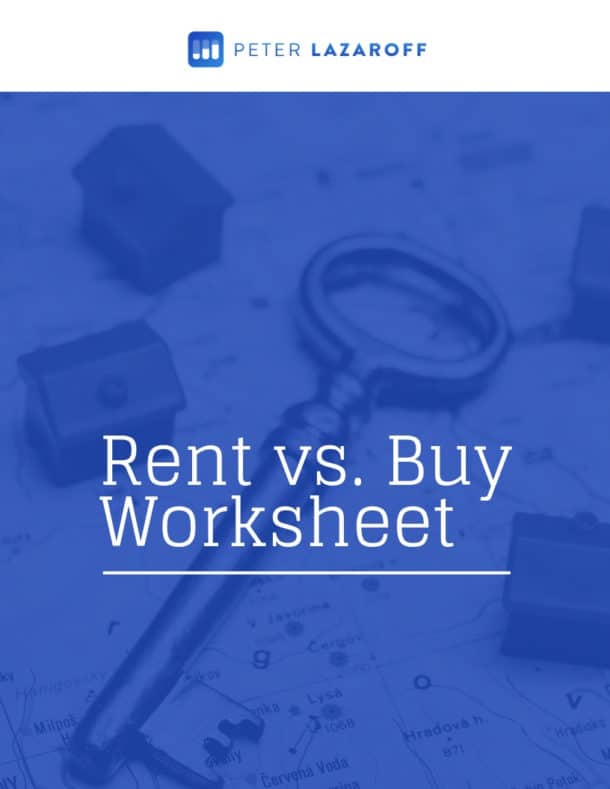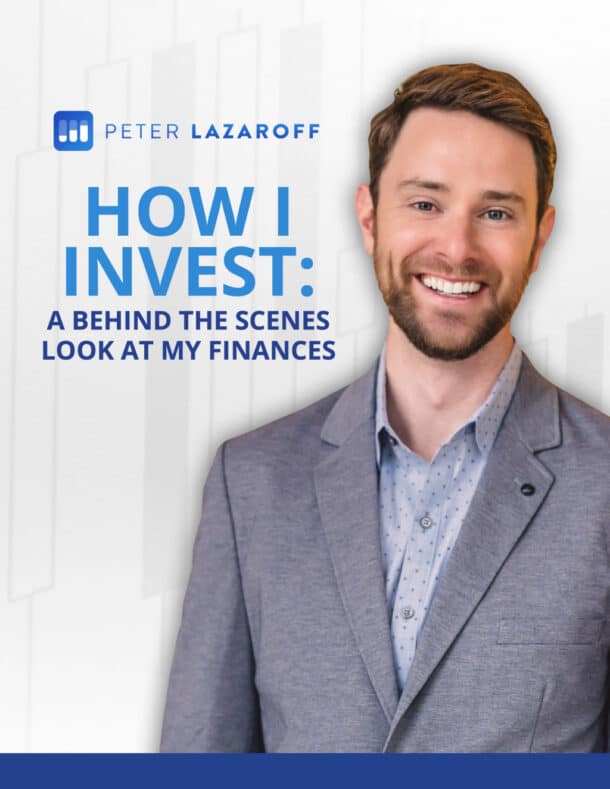Why does the stock market go up? Author and finance commentator, Brian Feroldi, joins the show to answer the most common questions everyday people have about the stock market.
Listen now and learn:
- How investors determine what a business is worth
- What makes stock prices bounce around every day
- Why stocks tend to go up over the long-term
Watch, listen or read the detailed show notes below.
Watch Now
Listen Now
Show Notes
I’m joined by Brian Feroldi, author of Why Does The Stock Market Go Up?: Everything You Should Have Been Taught About Investing In School, But Weren’t, which breaks down the most common questions everyday people have about the stock market and investing in easy-to-understand terms.
Brian notes that this book was aimed at beginners, but I’d argue that even lifelong investors will find it to be a refreshing walk through the fundamentals of what makes stock prices change in the short- and long-term.
I’m updating my Amazon page to include this title now because I can tell that I will be giving out this book quite a bit in the future. I work with lots of people who have been investing their whole life and yet they don’t truly understand the underlying fundamentals of investing.
So our conversation starts there. Here are some of my notes…
1:29 – How do investors determine what a business is worth?
There are several different ways to value a company, but one of the easiest is using a multiple of a company’s profits or net income at any given time. Brian gives the following example to explain the P/E ratio, which is a very familiar term to many investors…
Imagine a simple candy shop that creates $1 million in profits every single year. If Brian offers me the candy shop that nets $1 million in profits every year and wants to know how much I would pay for it.
If we had no idea what we were doing, perhaps Brian sells me the candy shop for $2 million. That means the P/E ratio of the deal is 2. To decide if that’s a good deal, you can take the inverse of the P/E ratio—so the earnings are $1 million and I paid $2 million for it, so that’s a 50% return on my investment.
That sounds like a great deal! Needless to say, $2 million is probably too low of a purchase price.
If I were to offer $100 million for the candy shop, that would probably be too high. The P/E ratio in this instance is 100 and the inverse of that gives me a 1% return on my investment each year. That suggests a $100 million purchase price is too high because I could stick my cash in Treasuries to earn more and not have the hassle of running a candy shop.
Determining a business’s valuation is the art of coming to a price that entices the seller to sell the business and entices the buyer to buy the business.
In this simple example, maybe I decide that a 10% return on my investment makes sense, which would be a P/E ratio of 10, so I would offer $10 million for the candy store.
This is a ridiculously simple way to value a business, but it shows the relationship between a business’s profits and how much it should be worth.
4:42 – What changes a valuation?
There are a bunch of factors that change the P/E ratio. In the simple example above, we assume that profits from the candy store will be $1 million forever.
Obviously, no such business exists that generates the same amount of profits in any given year forever. There are also businesses that never generate a profit, so that prior calculation goes right out the window. Other businesses have highly variable profits when the economy is doing well, but profits fall to the floor when recession hits and demand wanes. Some companies can remain profitable and even grow their profits during bad periods, others cannot.
So those factors can influence how much an investor should be willing to pay for a company.
Broadly speaking, a higher purchase price may be justified for companies with more dependable profits or faster growing profits.
Prevailing interest rates also are important. If interest rates are 0%, then it can make a company with a high P/E (low return on investment) look more attractive. For example, buying a candy store for $100 million and earning a 1% return might be more tolerable if interest rates are 0%. But if interest rates skyrocket to 8%, then that 1% return sounds awful.
These are just a few simple examples of the many quantitative factors that impact valuations, but psychology also plays a huge role too.
The large number of variables is part of the reason stock prices bounce around every day.
6:50 –Why do stock prices bounce around every day?
In the short-term, prices are primarily driven by investor psychology. Large, established businesses don’t really change that much on a day-to-day basis. However, the value that investors assign to businesses can change rapidly based on the broad psychology of all market participants.
It’s worth remembering that the stock market is kind of like a continuous live auction. Sometimes buyers are more eager than sellers and prices rise. Sometimes buyers are less eager and prices must fall to entice them to buy.
Basically, the stock market moves up or down based on how optimistic or pessimistic investors feel on any given day.
If investors are optimistic about the future, they are going to buy. And if the demand from buyers outnumbers the supply from sellers, prices are going to rise. If lots of investors want to sell and there aren’t many interested buyers, prices are going to fall. It’s simply a matter of supply and demand (I cover this dynamic greater detail in Episode 14).
9:38 – Why does the stock market go up or down over the long term?
Going back to the candy store example, let’s say that a fair value for the business earning $1 million every year is 10 times earnings (P/E = 10). That means the business is worth $10 million.
Now imagine the business is rapidly growing profits such that profits grow to $5 million per year a decade from now. After ten years, what is the candy shop worth now that its profits are $5 million a year?
At the same P/E ratio of 10, it would be logical to assume that the business is now worth $50 million because the annual profits are five times higher than before. The exact same principle applies to any business and the stock market as a whole.
Investors pay a multiple of profits to determine the price of a profitable business. As those profits increase over time, the value of the business increases. That concept should give investors confidence that the broad stock market will rise over the rest of our lives.
There will be short-term ups and downs in the market. But over long periods of time, there are several underlying forces pushing corporate profitability higher and, thus, lifting stock markets up over time.
When you look backwards, you can attribute stock market returns to three things:
- Changes in earnings
- Return of cash (dividends or stock buybacks)
- Changes in valuation
Investors often try to complicate it more than this, but these three things are truly what drives stock returns in the short- and long-term.
15:06 – Why does the stock market crash?
When bad things happen in the economy—particularly things that are a surprise—this causes mass change in investor psychology.
During a market crash investors transition from being very willing to invest and pay higher prices for businesses to being unwilling to invest and needing prices to drop dramatically in order to be enticed. When this happens quickly, it caused prices to collapse.
One of my favorite quotes from the book on market crashes: “Since they are always caused by human emotion, they are also unpredictable.”
20:00 – Why does the stock market always recover?
Brian explains how things that happen during downturns can pave the way for good things to happen in the future.
- People lose their jobs and are forced to try new things. Entrepreneurial spirit and innovation lead to new ideas and businesses. Companies are forced to innovate, too.
- Bad businesses go belly up. Those that do survive the downturns come back stronger as they pick up market share.
- Governments often provide assistance to businesses and consumers.
Those things, when combined, eventually lead to a recovery and sets the stage for businesses to emerge stronger than ever.
On the other side, profits eventually return and exceed their pre-crisis highs and that leads to inflation in stock prices.
23:57 – Why do earnings go up over time?
In his book, Brian lays out a number of forces that lead businesses to have higher profits over time, but he touches on a few here, including:
- Inflation: Broadly speaking, this increases revenue and profits in absolute terms.
- Productivity: Companies get better and produce more goods and services for the same or less inputs. This leads to more revenue and/or higher profits.
- Innovation: New products and services come to market, which opens up new market opportunities and growth.
- Population growth: If the population continues to grow by even 1% a year, that means there are more consumers out there to buy products and services.
- Geographic expansion: As companies grow and mature, they look to other countries for new opportunities.
Brian suggests that when you take all of the factors together, by and large, maybe they increase profits by 1% to 3%. They stack on top of each other and work together. This is why the profits of the companies in major indices trend higher over long periods of time.
While 1-3% may not sound like much, when compounded over decades, it makes investing the greatest wealth creation machine.
28:03 – Why do most mutual funds underperform the market?
Mutual funds face a structural disadvantage versus the market, which is why they fail to outperform a simple index over long periods of time.
Cost is a huge structural disadvantage, but also mutual funds make more money by gathering assets than they do outperforming the market. Because mutual funds lose assets when their performance diverges from the index too much, they often optimize themselves for longevity and asset gathering, not necessarily outperformance.
Side Note: My absolute favorite resource on mutual fund underperformance is The Incredible Shrinking Alpha.
31:30 – Should you stop investing if the economy is bad?
It’s enticing to look at what’s happening in the market/economy and draw conclusions on what’s going to happen in the stock market next and say, “Okay, I can’t invest right now. There’s too much uncertainty out there.”
Brian borrowed a stat from Ben Carlson: when the unemployment rate is over 9% (a bad thing) the annualized return on the S&P 500 is almost 25%. Meanwhile, when the unemployment rate is below 5% (a good thing), the annualized return on the S&P is about 4% a year.
Economic data is a lagging indicator, but the stock market is a forward looking indicator. It’s often a really good time to buy when the economy/market has gone through a really rough period. The worse the market has done recently, the higher one might expect future returns to be.
35:36 – Book Recommendations
Recent recommendations include:
- Just Keep Buying by Nick Maggiulli (see his interview with me here)
- The Psychology of Money by Morgan Housel
- The Simple Path to Wealth by J.L. Collins
Other mentions:
- One Up on Wall Street by Peter Lynch
- The Motley Fool Investment Guide
Brian also mentioned devouring everything by Robert Kiyosaki, Warren Buffett, Charlie Munger, Seth Klarman, and Jack Bogle.
36:51 – What does it mean to be a long-term investor?
Long-term investing is everything because short-term investing just doesn’t work.
There is no way to make money investing in the short term because doing so requires being right about the future direction of human emotions. We can’t even know what kind of mood we will be in later today, so how on earth could someone know what kind of mood investors are going to be in one month from now, three months from now, six months from now, etc.
It’s unrealistic to both predict what news is going to occur (which is hard enough on its own), but to also know how investors collectively are going to interpret the news and how that is going to affect their mood.
The only way to invest successfully is to invest with a long-term mindset. Anything can happen in the stock market—prices could double or fall 60%–but the data clearly shows that over multiple decades, the stock market has been a fantastic wealth creation machine.
As long as you continually put money into the stock market—buying during good times and bad times and holding for the long-term—the odds of you having a smile on your face in 10, 20, 30 years from now are very high.
Connect with Brian:
- Brian Feroldi on Twitter
- Brian Feroldi on YouTube
- Read Brian’s Book: Why Does The Stock Market Go Up?: Everything You Should Have Been Taught About Investing In School, But Weren’t
Resources
- Deeper Reading: How Markets Work by Peter Lazaroff
- Or Listen: EP 14: How Markets Work
- Great book on mutual fund underperformance: The Incredible Shrinking Alpha
Submit Your Question For the Podcast
Do you have a financial or investing question you want answered? Submit your question through the “Ask Me Anything” form at the bottom of my podcast page.
If you enjoy the show, you can subscribe wherever you listen to podcasts, and please leave me a review. I read every single one and appreciate you taking the time to let me know what you think.
About the Podcast

Long-term investing made simple. Most people enter the markets without understanding how to grow their wealth over the long term or clearly hit their financial goals. The Long Term Investor shows you how to proactively minimize taxes, hedge against rising inflation, and ride the waves of volatility with confidence.
Hosted by the advisor, Chief Investment Officer of Plancorp, and author of “Making Money Simple,” Peter Lazaroff shares practical advice on how to make smart investment decisions your future self with thank you for. A go-to source for top media outlets like CNBC, the Wall Street Journal, and CNN Money, Peter unpacks the clear, strategic, and calculated approach he uses to decisively manage over 5.5 billion in investments for clients at Plancorp.
Support the Show
Thank you for being a listener to The Long Term Investor Podcast. If you’d like to help spread the word and help other listeners find the show, please click here to leave a review.
Free Financial Assessment
Do you want to make smart decisions with your money? Discover your biggest opportunities in just a few questions with my Financial Wellness Assessment.

















